The Apple iPhone 6s and iPhone 6s Plus Review
by Ryan Smith & Joshua Ho on November 2, 2015 8:00 AM EST- Posted in
- Smartphones
- Apple
- Mobile
- SoCs
- iPhone 6s
- iPhone 6s Plus
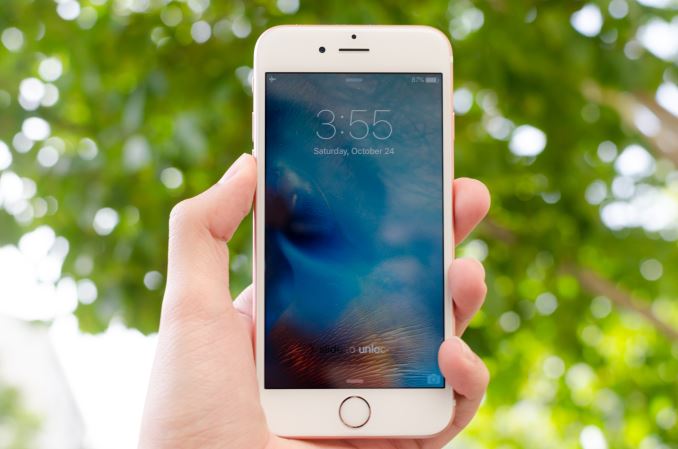
To be perfectly honest, this past year has been remarkably boring in the mobile segment. For whatever reason, phones have either stood still or regressed when it comes to overall quality. There are a few stand-outs that have been worth talking about like the Galaxy S6 lineup and the Galaxy Note5 lineup, but for the most part every phone I’ve reviewed this year has been disappointing in some way. I carry an iPhone 6 to make sure I stay current on changes in iOS, but my primary phone continues to be an HTC One M7. I was hoping to get a new Android phone this year, but so far nothing has really piqued my interest.
Part of the problem this year is that performance and battery life haven't been the most impressive in a lot of cases. By this point, it's really not a surprise that Snapdragon 810 doesn't deliver as much performance as it needs to for the amount of power that it draws. However, even independent of SoC it seems a lot of OEMs haven't really pushed the bar in design or attention to detail. Some phones have cameras with almost unacceptable post-processing quality, others continue to have poorly calibrated displays, and the ones that have none of those have problems with software experience or something else. In general, no Android phone I've seen this year really delivers everything that I'd want in a single package. There are phones that are clearly better than others, but nothing that rises to the level that I'd want before putting down a few hundred dollars.
In light of this lack of competition in the market, it's arguable that Apple is facing less competition than before. The iPhone 6s would continue to sell quite strongly even if this year's refresh was relatively minor as they would still end up quite strong competitively as they would be able to capitalize on momentum from previous years. If you were unfamiliar with the iPhone 6s and Apple's iPhone launch cycle, at first you might be convinced that Apple has done exactly that. However, in general the iPhone release cycle is such that industrial design is constant for two years at a time, so every other year sees a design refresh. When the design isn't refreshed, the phone often carries significant internal changes. In the past, the iPhone 3GS brought a better SoC, a faster modem, and a better camera. The iPhone 4S brought a new SoC, camera, and Siri. The iPhone 5s brought a new SoC, camera, and TouchID. In general, we can see a pretty clear pattern of evolution but it seems that with the 5s the refresh launches have generally brought new features as it has become insufficient to simply ship a faster SoC and possibly a modem and camera refresh to justify a new smartphone.
In the interest of diving into these changes at a high level, we can start with our usual spec table, which can give an idea for whether there's anything immediately worth talking about.
| Apple iPhone 6s and 6s Plus | ||||
| Apple iPhone 6 | Apple iPhone 6 Plus | Apple iPhone 6s | Apple iPhone 6s Plus | |
| SoC | Apple A8 2 x 1.3GHz Apple Typhoon |
Apple A9 2 x 1.85GHz Apple Twister |
||
| GPU | PowerVR GX6450 | PowerVR GT7600 | ||
| RAM | 1GB LPDDR3 | 2GB LPDDR4 | ||
| Display | 4.7-inch 1334 x 750 IPS LCD | 5.5-inch 1920 x 1080 IPS LCD | 4.7-inch 1334 x 750 IPS LCD | 5.5-inch 1920 x 1080 IPS LCD |
| Size / Mass | 138.1 x 67 x 6.9 mm, 129 grams | 158.1 x 77.8 x 7.1 mm, 172 grams | 138.3 x 67.1 x 7.1 mm, 143 grams | 158.2 x 77.9 x 7.3mm, 192 grams |
| Camera | Rear Facing 8MP iSight with 1.5µm pixels + True Tone Flash Front Facing 1.2MP F/2.2 |
Rear Facing 8MP iSight with 1.5µm pixels + True Tone Flash + OIS Front Facing 1.2MP F/2.2 |
Rear Facing 12MP iSight with 1.22µm pixels + True Tone Flash Front Facing 5MP F/2.2 + Retina Flash |
Rear Facing 12MP iSight with 1.22µm pixels + True Tone Flash + OIS Front Facing 5MP F/2.2 + Retina Flash |
| Storage | 16GB/64GB/128GB | |||
| I/O | Apple Lightning connector, 3.5mm headset | |||
| WiFi | 2.4/5GHz 1x1 802.11a/b/g/n/ac, BT 4.2, NFC | 2.4/5GHz 2x2 802.11a/b/g/n/ac, BT 4.2, NFC | ||
| Price | $549 (16GB) | $649 (16GB) | $649/749/849 16/64/128GB | $749/849/949 16/64/128GB |
At a high level, there are already a number of changes that we can talk about. The SoC is new and improved for this year with improved performance and power. The rear camera now supports 4K video recording and has higher resolution photos than what we’ve seen before. The front-facing camera is now higher resolution as well. The iPhone 6s finally has 2 GB of RAM, with improved power and bandwidth along with improved multi-tasking that comes from additional RAM. The modem now uses less power and also capable of higher throughput, as is the WiFi chipset.
Outside of these spec sheet changes, Apple has implemented a number of new features. One of the major highlights is 3D Touch, in which the display is force-sensitive and allows for new user interface actions based upon the amount of pressure applied to a point on the display. The front-facing camera now uses the display as an LED flash of sorts in low light, which measures ambient light in order to determine what white balance to use along with a backlight driver that temporarily spikes brightness to up to three times the normal maximum brightness for effective lighting. Both cameras now have Live Photos, which records a 1.5 second segment of video before and after the photo taken to capture a moment rather than an instant without the complication that comes with videos.
Design
Of course, before we can get into all of these changes we can start by focusing on the most immediate change, which is the design. For those that are unfamiliar with Apple’s iPhone launch cycle, the S launch cycle usually retains the same industrial design as the previous iPhone. As a result, the changes here are rather scarce. Those interested in a detailed description of the design should refer back to the iPhone 6 review.
However, there have been changes to the look and feel of the iPhone 6s lineup. The first, and most immediate change is the addition of a new color that Apple calls Rose Gold. This is much redder in tone than what we saw with the Apple Watch Edition, to the extent that it looks more like a light pink with a gold tinge rather than gold with a light pink tinge. I’m probably the last person in the world to consult on what color looks best, but I don’t really see anything wrong with this color.
Outside of color, the iPhone 6s lineup has changed in a noticeable way when it comes to materials and in-hand feel. The aluminum back cover is now 7000-series, which increases rigidity with the addition of zinc which increases yield strength, or the pressure needed to permanently deform the material. It’s likely that relative to the iPhone 6, ultimate tensile strength has also increased, although given that tensile strength is a test of how well the metal avoids breaking apart it’s unlikely that this property matters all that much. If you're actually reaching the ultimate tensile strength of a phone's back cover, you've probably already broken everything else in the phone.
With the use of this new aluminum back cover, the phone should be less susceptible to bending under extreme forces. I never had a problem with this when testing the iPhone 6 last year, but it shouldn’t be a problem now. Oddly enough, I did notice that the iPhone 6s is easier to grip than the iPhone 6, but the difference isn’t big enough that I would avoid using a case.
The other change is a new type of cover glass on the display, which uses a dual ion exchange process to make it tougher. According to Apple, this glass is the most durable of any in a smartphone today. A simple search with Google gives reason to suggest that Corning is making this glass as Corning holds a patent for this process. While we have no idea what Apple’s process is, the same dual ion exchange process occurs, which creates two distinct stressed layers that improves impact strength relative to a standard single ion exchange that is seen in Gorilla Glass.
Other than this, the design of the iPhone 6s remains quite good. The rounded edges and slightly curved glass help with in-hand comfort and things like the placement of the 3.5mm headphone jack on the bottom is a smart idea as the headphone jack is easily accessible when the phone is inside a pocket. We can talk about how the camera hump means that the phone doesn't rest completely flat on a table, but given that the phone has gotten about 15 grams heavier in both the iPhone 6s and 6s Plus I suspect it makes sense for Apple to avoid making the phone any thicker with extra battery than they have now. I would rather see thinner lines to insulate antennas here, but I suspect that there is some RF requirement that makes it difficult for this to happen.
Compared to something like the HTC One M9 which also has an aluminum unibody design Apple is far ahead in terms of overall ergonomics and cohesiveness. Relative to the Samsung Galaxy S6 I think the iPhone 6s is noticeably more comfortable due to the more rounded edges, but the iPhone 6s Plus and Galaxy Note 5 are pretty close in overall ergonomics. I do wish Apple would go to a front-ported speaker for the iPhone, but it seems that this is unlikely to happen due to the home button and bezel constraints.


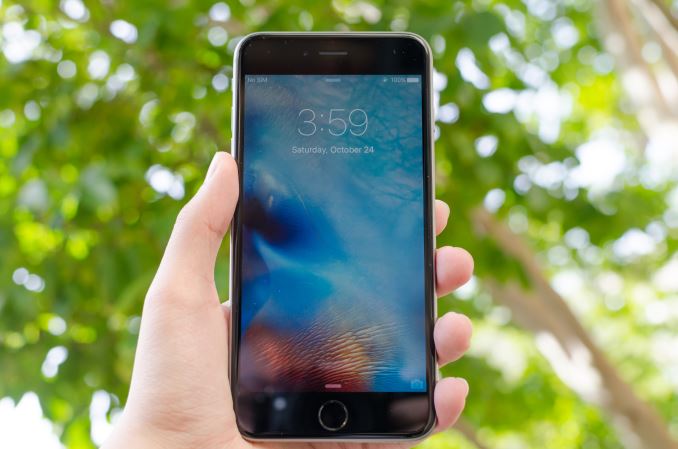
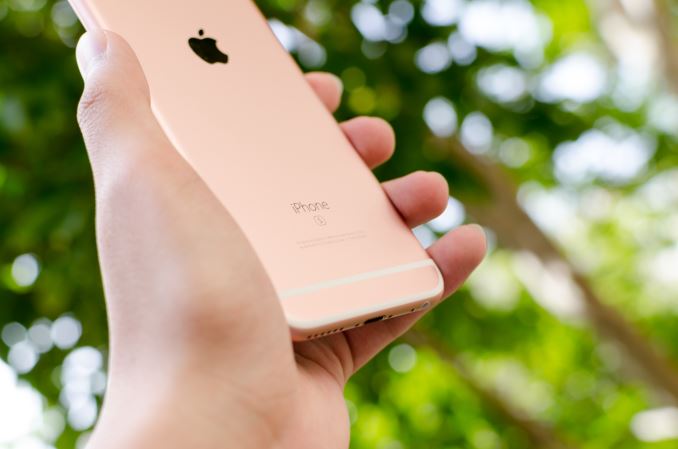
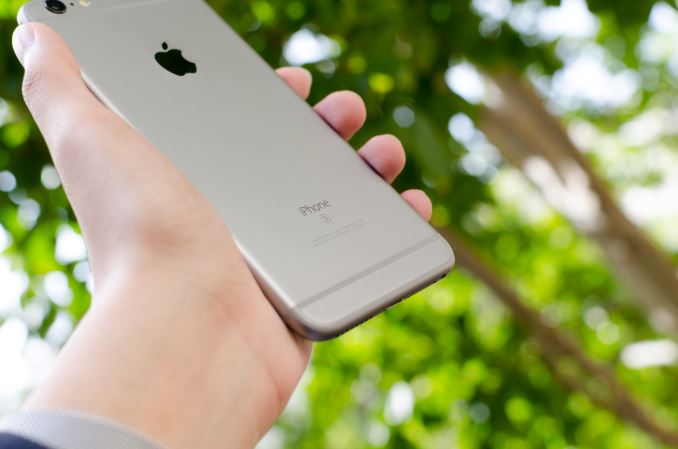
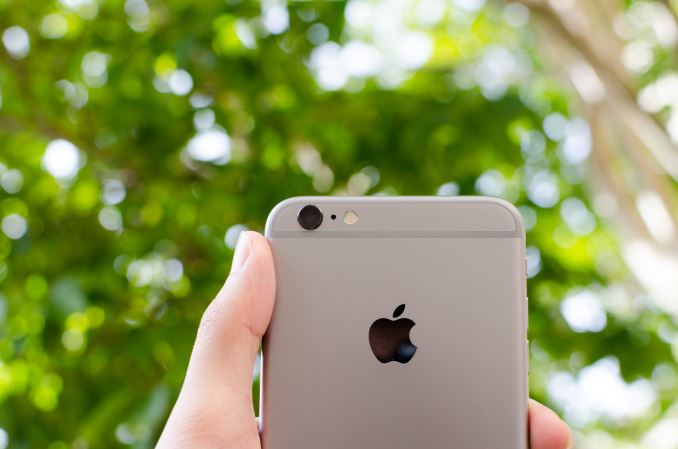
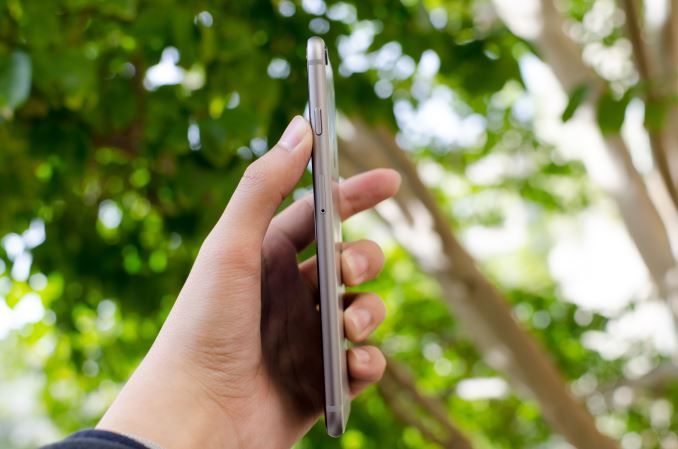
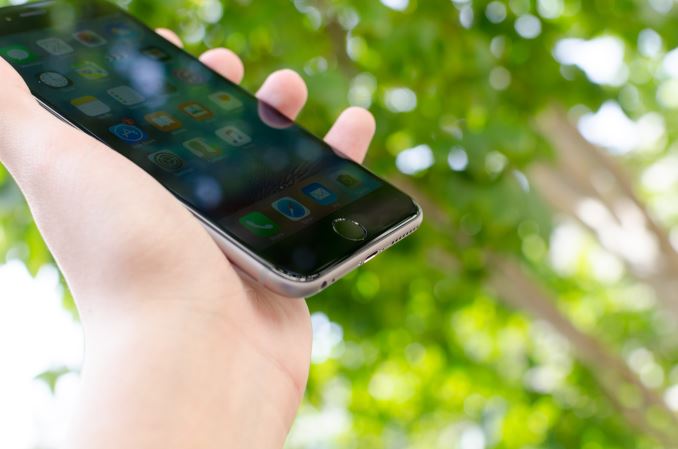
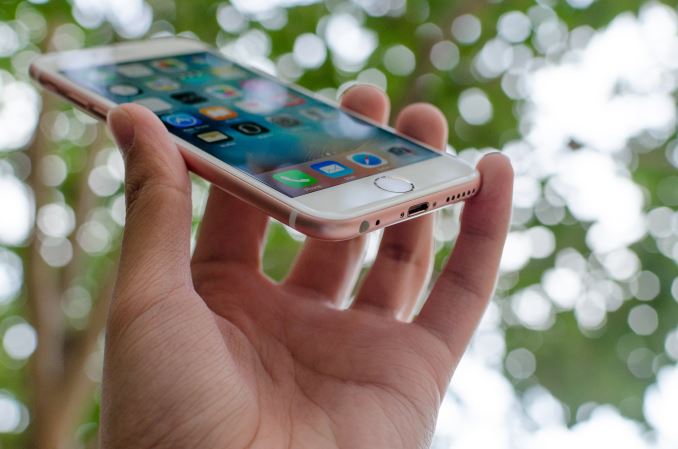








531 Comments
View All Comments
akdj - Tuesday, November 3, 2015 - link
Hi Josh and Ryan,Many, MANY thanks for the insight and in depth review. I've just finished my second read (it was late last night I noticed the review and read through) and your experiences mimic mine. With a single exception. I'm a business owner, have been over 26 years now and use phones for the business and personal. I also outfit employees so I have a chance to stay 'ambidextrous', keeping a foot in Android, rest of the body in iOS ... But some things I do enjoy on both my older Note 4, & newer S6. No intrigue with the Note 5 other than its SoC, speed of internal storage and design over my older N4. As an S6 Edge owner I'm well aware of the speeds uninstalling, installing apps, opening them, the 'feel" of the newer 2015 Sammy phones as well as the exceptional speed of the Exynos processor. That said, you made a remark I don't quite agree with
"The second generation of TouchID isn’t quite as life-changing, but it’s a welcome improvement nonetheless. Again, this is a case where there was friction in the user experience that wasn’t really noticeable until it was gone. Obviously, Apple is no longer the only one at this level of user experience with fingerprint scanners but they are keeping up."
I'm not sure which phone you've found that parities the iPhone 6s/6+s for FP register. As it's certainly not the S6/S6+/Note 5 or LG (I've got one of their freebie 8" LG tabs from AT&T runnin LP). I'm hoping anyway lol. My silly S6 is just finally starting to correctly register 50% of the time with the 5.1 update. The previous six months I was lucky to have my thumb recognized 1 of 5 times. And it's registered as FOUR different 'fingers'.
I'm also an owner of the 6+s and even checking the time or setting an Altman, turning the flashlight on, etc...it's so damn quick, I'm automatically on the home screen. It's ...pardon the pun, lightning fast and immediate. I guess I'm curious as to which OEM Apple is keeping up with as I had the 5s and 6+ standard as well. The Note 4 is a useless implementation and the S6, while better is a LONG way off from 'keeping up with...' Apple again IMHO. Genuinely curious as to the OEM making better or even similar performing and 'protective' measures than Apple.
Other than that silly nitpick, I agree completely and haven't enjoyed an iPhone as much since the iPhone 4 and its HiDPI display. If I recall, another 'first', wasn't it? (Like the 5s FP reader, actually able to 'read an FP ;)). Maybe it's my aging mid 40s eyes but the higher resolutions and larger displays have literally kept pace with my deteriorating vision!
Once again, many thanks for the perfectly balanced nerd/everyday 'Joe n Jane' subjective review of 'real world use'. Always refreshing to hear... I mean read your reviews, un-rushed to keep up with the herds the day after release or a week post NDA, minus the carrying around and using ...or simple resolution, 100% 'chart n number' reviews.
Loved it. And I'm loving the iPhone 6s+. It's truly a computer in my pocket. I know you briefly touched on the expanded radios both WiFi and LTE, another maybe at first unnoticeable unless ...again as you mention an iCloud restoration of significant size, but a HUGE end user boon. These are incredibly fast, seemingly more 'stable' in 5MHz mode. (Maybe a bad word, stable but hard to put my finger on it, as older modems on the iPhone with AC/5MHz or is it GHz? Now I'm lost. This one seems faster, more efficient and stable than earlier versions )
My wife has an identical iPhone 6+s. 128. Hers is Sammy mine TSMC. Neither has shown any significance in battery draw than the other. Mine measures 2238/4437 in GBench, hers 2242/4405 after six runs ...that's the mean. Power and efficiency are nearly identical after a weekend at our cabin we both had single digit %'s and used them nearly the same the entire weekend.
Very VERY great phone
J
MarcSP - Wednesday, November 4, 2015 - link
Thanks for your explanation :-). Still, I think there must be something else. I mean, most Samsung phones also use amoled and did not get such a low score in browsing, and the Snapdragon 800 is not a very slow SoC. Even today there are many low and even middle-end phones sold with weaker SoC.zodiacfml - Wednesday, November 4, 2015 - link
i dont like apple but their engineering and design is very impressive. i wonder how the new cpu compares to a Core M.tharun118 - Wednesday, November 4, 2015 - link
The best phone? Seriously? I've seen a lot of people saying iPhone as THE BEST phone, but AnandTech? Come on.. I believe that there can never be a "THE BEST phone". Yes, iPhone 6+ has a very good SoC, reliable camera, 3D Touch, etc, but like every flagship phone, there are compromises and drawbacks. For me, I choose a smartphone based on 4 major aspects. First, the screen. I know Apple lovers always defend their 320+ PPI screen saying that's more than enough and they don't need anything more. But the truth is, they are far behind Samsung and that will likely change in 7 or 7s. Second, the camera, this is purely subjective, there are people who'd prefer photos from an iPhone and there are people who'd prefer photos from 2015 android flagships (S6, Note 5, G4, 6P, etc). Third, battery and performance: Apple is better here on a tiny margin due their vertical integration. I think Android phones will never reach the exact smoothness in performance and efficiency in power consumption of the latest iPhone, due to fragmentation. Fourth, customisation: No comments here, but I understand there are lots of people who'd happily use their phone the way their manufacture tells them to. I'm definitely not one among them. I try to balance all these 4 aspects and my choice this year was a Galaxy S6. Of course, there are bonus features such as, wireless charging, quick charge (very useful), IR port, etc. But still, I wouldn't call S6 as THE BEST. Neither is an iPhone 6+.Vincog - Wednesday, November 4, 2015 - link
I got iphone 6S with samsung chip here, and my battery will decrease 1% every 5 minute in use or 1% every 15 minute standby... ( take a note all background refresh off, location off, only hey siri on ) ..Even my iphone 5s is more better than this one!! 😭😭😭😭Tigran - Wednesday, November 4, 2015 - link
***Looking at GFXBench, which is an infinite loop of the T-Rex on-screen benchmark to approximate intensive video gaming we see that the iPhone 6s doesn’t last very long either, but the performance throughout the test is incredible. Due to 1334x750 display resolution and strong GPU, the iPhone 6s manages to last the entire test without any notable throttling, and effectively pegged at the refresh rate of the display.
***
Why V-Sync (which limits T-Rex on-screen by 60 fps) is ignored? And what about this throttling evidence (by 20-22% in GFXBench off-screen):
http://forums.anandtech.com/showpost.php?p=3772777...
blackcrayon - Wednesday, November 4, 2015 - link
They mentioned that the 6s+ throttled slightly due to the higher resolution, so it stands to reason that the 6 would also throttle when rendering a higher resolution offscreen. But it's nowhere near the throttling of any of the competitors, games are still remaining playable throughout a reasonable gaming session.Tigran - Wednesday, November 4, 2015 - link
You don't get it. It's not about resolution - it's about T-Rex on-screen which limits performance to 60 fps. Without this limit iPhone 6s performance would be much higher, so it is incorrect to mention T-Rex on-screen discussing iPhone 6s throttling. If there is throttling, it can decrease from 100 to 70 fps, but you will see only 60 fps during the whole test - because of V-Sync. And there is evidence off throttling in Manhattan (which doesn't reach 60 fps limit) actually - see my link above (20-22% throttling). I can add that popular Russian laboratory (overclockers.ru) tested throttling of iPhone 6s via Basemark Metal, and they found enormous throttling there - from 911 down to 525 (74%).zhiliangh - Wednesday, November 4, 2015 - link
Thank you! I have been waiting for your review before upgrading any phone this year. This is a must-read iphone review.Spunjji - Wednesday, November 4, 2015 - link
I have a bit of a gripe regarding the conclusions in the camera section. The LG G4 is clearly providing better images at night than the iPhone 6s and 6s Plus - granted there is "less motion blur" in the Apple images, but they're also quite clearly underexposed by at least a stop. It therefore seems odd to conclude that a product which produces grainier, less-detailed and murkier images than the competition is better. You could produce similarly non-blurry results on the G4 by adjusting exposure compensation and then have the best of both worlds!